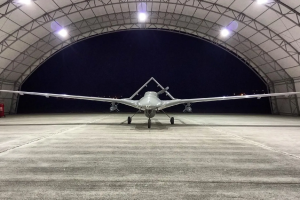Turkey is awaiting a response from the U.S. regarding the proposed sale of 40 F-16 Block 70 fighter jets and 79 modernization kits for its older F-16 fleet.
While the Biden administration is keen on greenlighting the defense sale, some congress members oppose it, primarily because they have close ties with anti-Turkey lobby groups, mainly Greek and Armenian.
On the other hand, the very same congressmen applaud the U.S. government’s decision to sell F-35A jets to Greece. Actually, Turkey was a participant in the F-35 development program, but that relationship was broken when Ankara decided to purchase the Russia-made S-400 air defense missile system.
Many in Turkey hold the view that the Turkish air force would not have got the F-35s even if Ankara had not bought the Russian missile system. Because the sale of cutting-edge weapons to Turkey is doubtful due to the Turkish government’s independent foreign policy from the U.S. and its competing interests with Washington.
Different options
Turkish officials are occupied with developing alternate short-, middle-, and long-term options for their air defense needs since they are aware of the anti-Turkish sentiment in Washington.
When British defense minister Ben Wallace met his Turkish counterpart Hulusi Akar in London in mid-January, one potential solution had already been put forth.
There were reports that Akar negotiated to buy Eurofighter Typhoons, C-130J Super Hercules military transport aircraft, and Type 23 frigates with an estimated value of $10 billion.
Some sources disclosed that Turkey might purchase two squadrons of Eurofighters, estimated between 24 to 48 units. The Turkish defense ministry did not refute the claims but said they are not in the final stages of negotiations.
The Eurofighter Typhoon fighters are the most important of the aforementioned weapons for the Turkish army to preserve its air attack/defense capacity. Several European nations, including the UK, Germany, Italy and Spain, jointly produce Typhoons.
It is a twin-engine, multi-role fighter with a canard delta wing that can cruise at a top speed of 2.125 km/hour and carry a payload of 7.5 tons. The jet is capable of supercruizing without using an afterburner.
Typhoon
Typhoons are mostly compared with the F-22 Raptors, known as the best-ever built fighter. Perhaps, F-22 is one step ahead of Typhoon but the latter is regarded as better than all other fighter brands.
Whether Turkey will buy Typhoons, whose acquisition will be a force multiplier for Turkish air forces, from the UK for its short/mid-term needs is yet to be known. Because there might be impediments to the procurement of Eurofighter Typhoons.
For instance, Typhoon’s project partner Germany might set up barriers, or Washington might put pressure on the UK to stop selling them to Turkey.
The U.S. congress will probably not allow the sale of F-16s to Turkey or will put forward some conditions, such as not using the jets against Greece or unconditional ratification of Sweden and Finland’s NATO membership.
For sure, Turkey will not come to terms with Capitol Hill. Moreover, even if the U.S. congress approves the sale, the F-16 Block 70 backlog is so large that Turkey may not be able to receive the first jet before 2028 or even later.
Still very strong
However, this does not mean that the Turkish air defense will be vulnerable. The long-term solution is the production of the indigenous TF-X jet. The project is not an easy task to achieve in the short term, but it is not impossible, either.
The biggest problem the producer, TUSAŞ, might face is the engine. However, while TUSAŞ’s subsidiary TEI could produce a 6000 lb. thrust (10.000 lb. with afterburner), it has started to work on the engine of TF-X, too.
In normal conditions, it is not likely that the engine will be ready earlier than 2030. However, engine production will undoubtedly advance more quickly if Turkish authorities realize they cannot purchase parts from their western allies, such as engines.
We must also highlight that the Turkish army is not in a desperate position for its fighter fleet. It already has 243 F-16C/D and 48 F-4E in its inventory. While the fleet is aging, there is no apparent security threat.
In case of a likely war, the current number is enough for Turkey to defend itself. It is correct that Greece has bought Rafales from France and will receive both F-16 Block 70 and F-35 jets from the U.S., which might give it air superiority. But Athens will enjoy it for the short term as TF-X will be flying right after they receive the mentioned jets.
Besides, UCAVs accompanying Turkish jets will most probably fill the gap. Imagine how a swarm of 300 armed drones could mess with the enemy’s fighters, enabling Turkish fighters to bombard the enemy without interruption. This is what might happen within just two years.
Source: Politics Today






